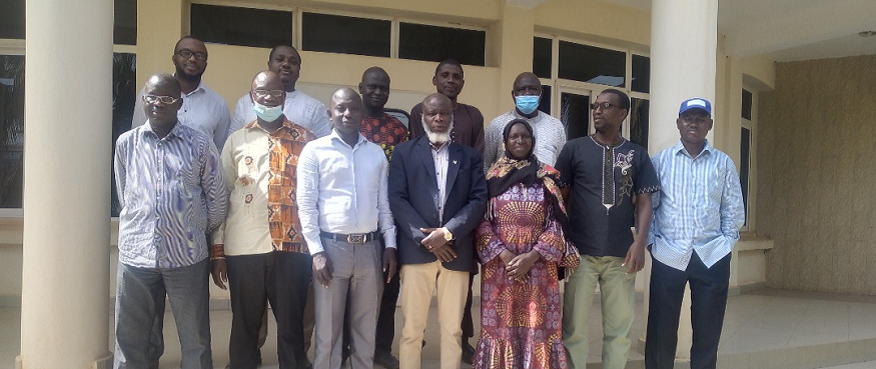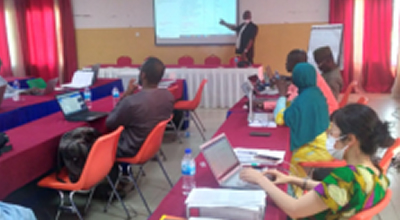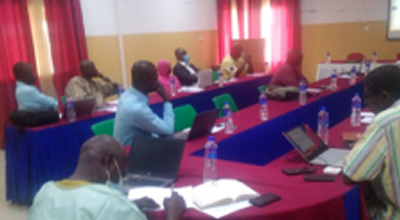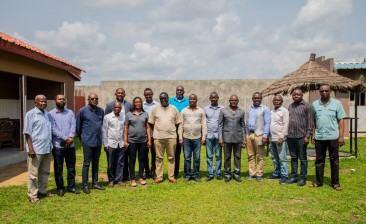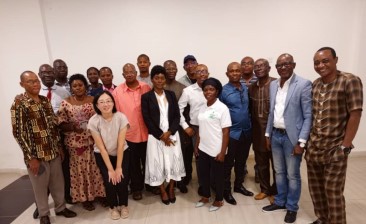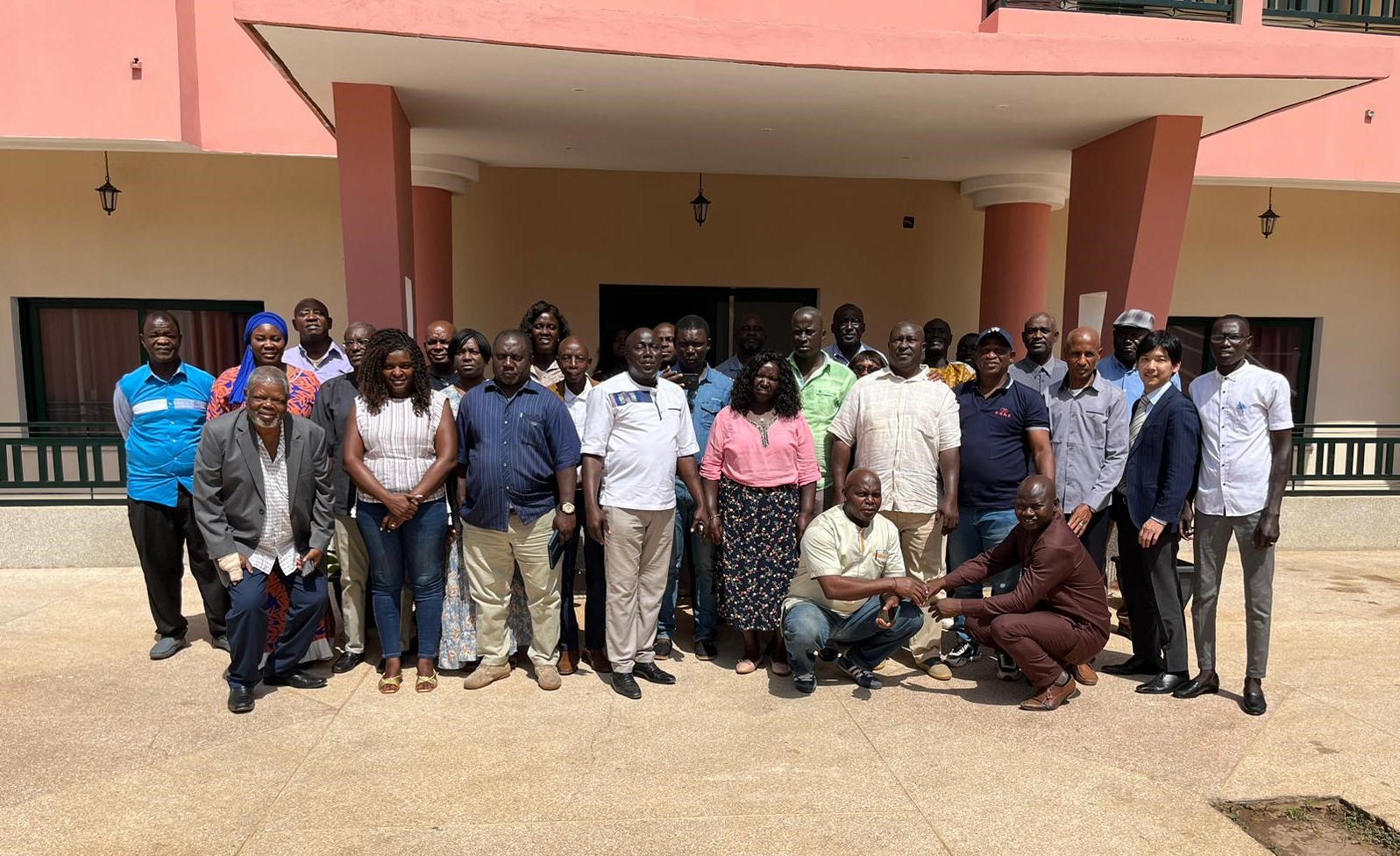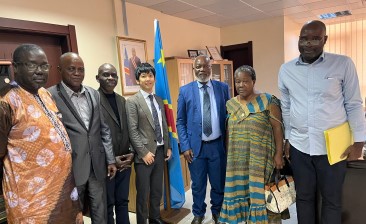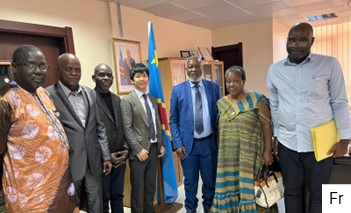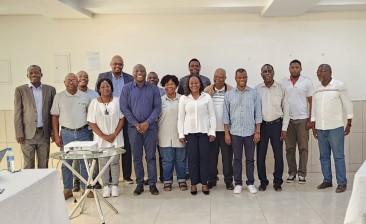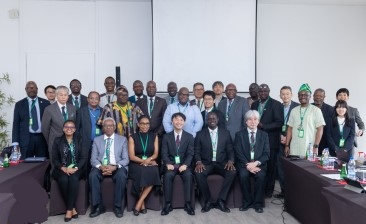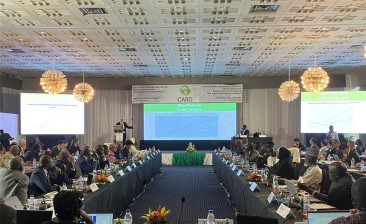Gambia, February 2022
NATIONAL RICE DEVELOPMENT STRATEGY (NRDS2) OF THE GAMBIA
The working week to revise the National Rice Development Strategy (NRDS) of The Gambia was held between 21st to 25th February, 2022 at the conference hall of the National Nutrition Agency (NaNA), Baku, with the task force members drawn from the public sector, research institutes and farmers’ union. The Gambian National Rice Development Strategy (NRDS) was developed in 2014 to guide the development of the rice sector until 2024, however considering the development on the ground over the last few years in the sector and also cognisant of the fact that CARD is in the second phase with a new approach called R-I-C-E (Resilient, Industrialization, Competitiveness & Empowerment), the government of Gambia represented by the Focal Point requested the Secretariat to support the Gambia’s revision process of the NRDS to capture the current realities in the rice sector.
In an overview of the rice sector of The Gambia, the NRDS Focal Point pointed out that the target set for the present NRDS was far from being achieved. Therefore, this revision exercise will help to look at better ways to achieve the new target that will be set. The NRDS, the primary document for rice development in The Gambia, needs to be aligned with the National Development Plan (NDP). Accordingly, some of the data contained in the current NRDS have become obsolete. The revised NRDS, called NRDS2, will be a value proposition document that will guide investors and various development partners towards investment in the rice sector in a coordinated manner.
The task force members went into brainstorming group discussions to map out key areas that will be pursued to grow the rice sector of The Gambia.
Key outputs/results
The following outputs were realized from the group discussions:
A seed sub-group of the task force identified several varieties of good seeds in the system; however, after discussions, they identified ten (10) resilient varieties that can be produced and promoted. They also agreed that these varieties need to be produced based on the ecologies where they are most suited. These are shown as follows: i) irrigated lowland (Sahel 134, 177, NERICA L19 & Orylux 6), ii) rain-fed lowland (IR 19746 & Sahel 134), iii) rain-fed upland (WAB 105, NERICA 4 & 6) and iv) Mangrove (ARICA 6 & 11).
Based on projected population figures and current per capita consumption of 117kg, the estimated production target for achieving self-sufficiency will be 359,147MT (milled rice equivalent). To realise this objective, the task force members proposed significant investments in developing and cultivating an additional 187,171ha land area across all the ecologies by 2030. This means an increase in the harvested area by 4-fold (from 60,097ha in 2020 to 247,000ha in 2030). With an average yield of 3.2 t/ha across the ecologies, production will increase 11-fold over the baseline figure (from 38,086MT in 2020 to 423,372MT in 2030) at a 65% milled rice recovery rate. This shows that the self-sufficiency target of 359,147MT will be surpassed by 64.2MT the excess could be used as buffer stock.
To improve the quality of local rice in the market, the sub-group of the task team in charge of processing and marketing identified the limited availability of modern rice processing mills in the country as one of the major challenges. The participant’s suggested solution includes investment in small and medium-scale processing mills in the short and medium term while integrated rice mills in the long term.
To better implement the NRDS, a proposal to establish a two-layer governance structure for the NRDS2 was extensively discussed and agreed upon. That is the establishment of 1) the National Rice Development Steering Committee (NRDSC) and 2) the Regional Rice Development Steering Committees (RRDSC). The NRDSC will be headed by the Permanent Secretary of the Ministry of Agriculture, with high government officials as its members, while the Regional Governors will jointly steer the RRDSC. The Deputy Permanent Secretary (Projects & Programs) will be the rice desk officer and, in conjunction with the NRDS focal point, will oversee the day-to-day running of rice affairs in the country.
At the end of the working week, the discussion outcome will be consolidated to revise the NRDS. The NRDS2, which incorporates those inputs from the working week, will then be shared with stakeholders for comments, after which the document will be validated, followed by ministerial approval and launch.
Participants in workshop
